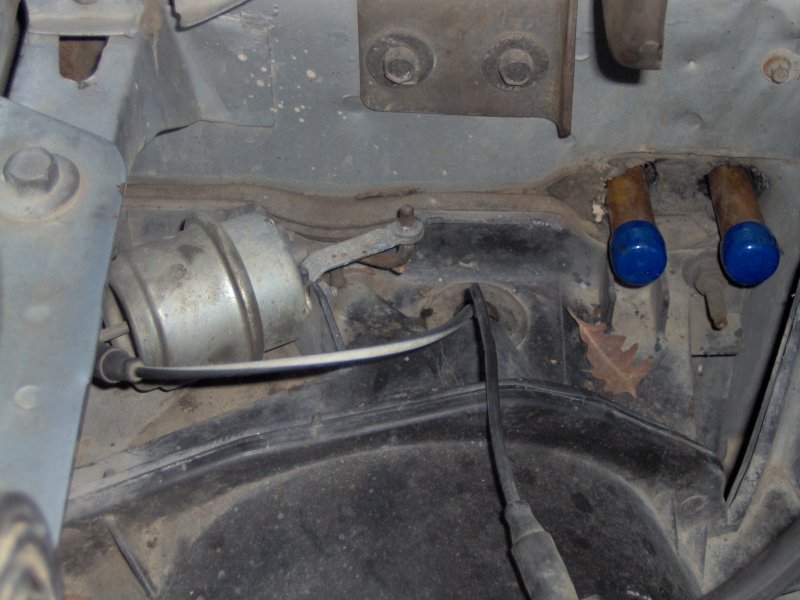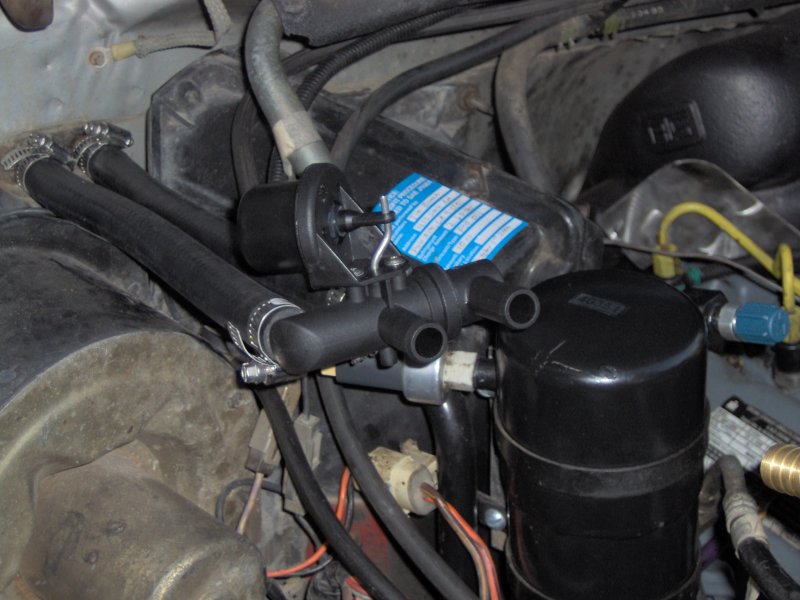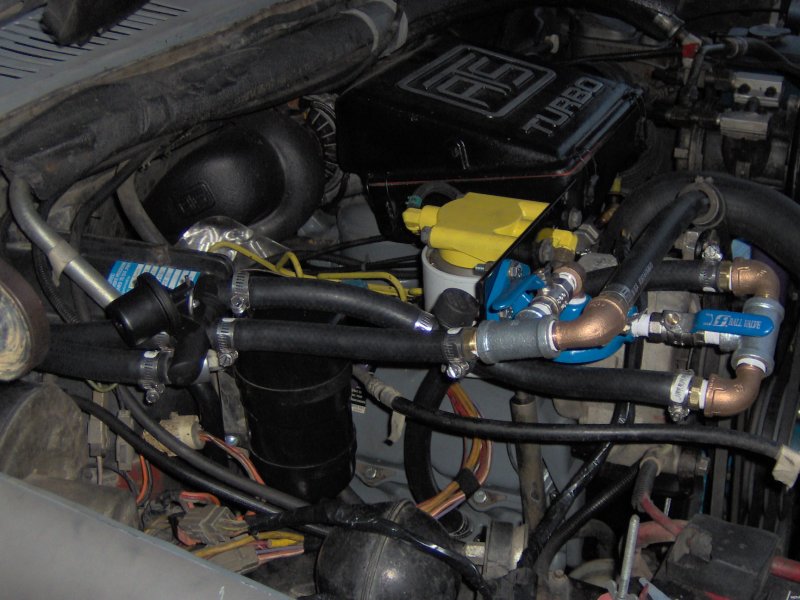
Adding a Heater Core Bypass to a Ford Cooling System
Unlike many older vehicle cooling systems that use a valve to cut coolant flow to the heater core when the heater's not on, the 1980 to 1997 Ford full-size truck cooling system has coolant flowing through the heater core constantly. Ford did not see this as a concern, considering that the ducting system utilizes a temperature blend door that, in theory, isolates the air going through the heater core from the system if heat isn't desired i.e. if the air conditioning is operating. However, the insulation on the edges of the temperature blend door tends to get brittle and ineffective over the years. This results in the temperature blend door not sealing hot air in the heater core duct when the air conditioning's running, making the air coming out of the ducts warmer than it would be otherwise. A simple way around this is to install a bypass valve to cut off coolant flow. Some have simply put in a manual valve, requiring the owner to go into the engine compartment to turn the heater on or off. Others have found that a vacuum-actuated valve can be used instead. I decided to install a vacuum-actuated valve at the same time that I installed the coolant filter on my truck. I used a 4-port valve intended for a 1996 Ford Ranger, and purchased it from Napa Auto Parts (part number BK 6601294) for less than $20. The 4-port valve makes it so that coolant will always be flowing through the hoses up to the valve, and simply diverted straight to the return hose instead of going through the heater core first. The necessity of maintaining flow is debated, but I didn't see any harm in setting the system up this way.
Note that this will work on any 1980 to 1997 Ford truck with factory air conditioning, with a diesel or a gasoline engine. This principle can also work on many other vehicles, although details will vary. Note also that, if you have or plan to install a coolant filter, you will need to put the valve between the coolant filter plumbing and the heater core. If the bypass valve is placed between the coolant filter and the engine, coolant will not circulate through the filter unless the heater's in operation. Also, it should go without saying that the engine should be cold and pressure in the cooling system should be first relieved by removing the radiator cap. It shouldn't be necessary to entirely drain the cooling system, although this would be a good opportunity to flush out the system if it hasn't been done recently. A catch basin (bucket, etc) can be used to collect the coolant that will come out of the heater hoses when you remove them. I would suggest using this as an opportunity to replace the hoses, although that's a personal judgement call.

The black line with the white stripe is a vacuum line, currently connected to the vacuum pod that opens the recirculation door. With the climate control selector switch on "OFF" or "MAX AC", this line has vacuum applied, keeping the door closed and making the fan pull air from inside the cab. With the selector switch in any other position, this line is open to atmosphere, keeping the recirculation door open. I decided to use this line to open and close the bypass valve. I simply purchased some vacuum line of the appropiate size along with a plastic T-fitting. I then unplugged the line from the pod (the connection at the very left), plugged that line into one side of the T-fitting, ran a piece of fresh hose from another side of the T-fitting to that pod, and ran a length of fresh hose from the last side of the T-fitting to the valve itself.

The bypass valve, with the lines going to the heater core attached. I had not yet hooked up the vacuum line to the valve. The valve could actually be installed in either direction; I chose that orientation to make the vacuum hose run as short as possible.

The bypass valve completely plumbed into the system. This was a very simple task, and I feel that it was worth the effort. I did not have an air conditioning thermometer meant to go into the ducts to tell me how cold the air was as it came out of the ducting, but based on perceived temperature differences between the air flow with the switch in "MAX AC" and "NORM AC", it feels as though the valve makes a difference.
Back to main Ford page
Page updated November 14th, 2005